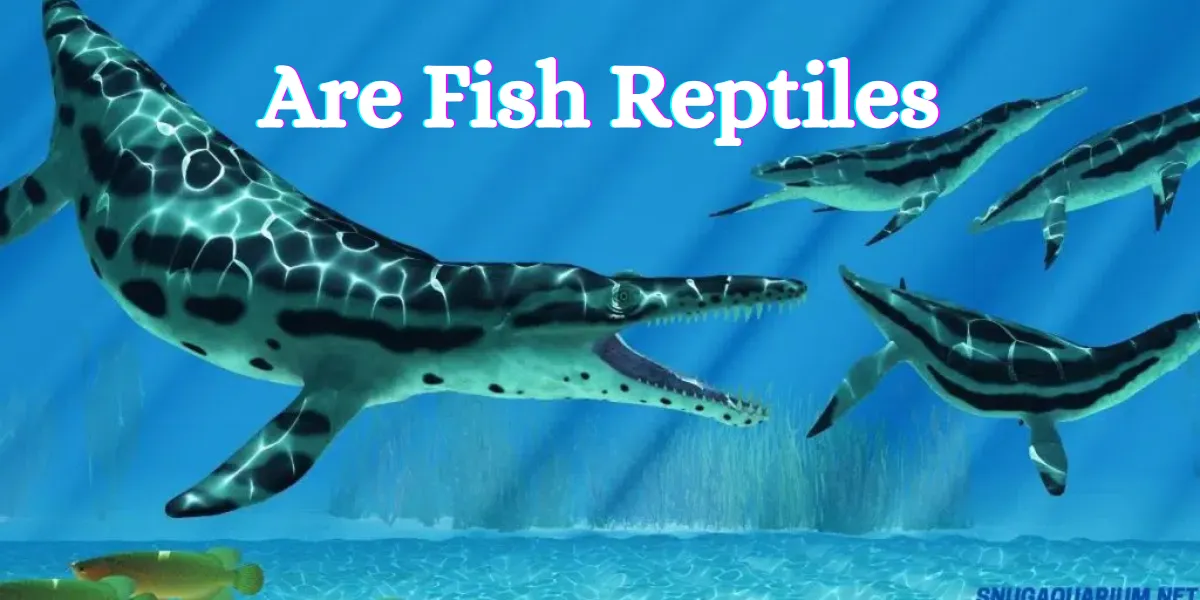Are Fish Reptiles?
From the majestic depths of oceans to the serene waters of freshwater lakes, the world of aquatic life has long captivated our imagination. Among the countless creatures that inhabit these watery realms, fish and reptiles stand out as prominent groups. But have you ever wondered: are fish reptiles? This intriguing question delves into the very heart of biological classification and evolutionary science. In this article, we embark on a journey through the realms of fish and reptiles, exploring their characteristics, differences, and the fascinating connection that ties them together.
Understanding Fish: The Aquatic Wonders
The Diversity of Fish Species
Fish, members of the class Pisces, encompass a vast array of species, each uniquely adapted to its aquatic environment. From the sleek and swift predators like sharks to the vibrant and delicate coral reef dwellers, fish inhabit virtually every corner of the underwater world. Their streamlined bodies, gills for respiration, and finned locomotion set them apart as quintessential aquatic organisms.
Anatomy and Adaptations
The anatomy of fish is a testament to their evolutionary success in water. Scales provide protection and reduce friction, while fins serve as stabilizers and propellers. Gills facilitate the extraction of oxygen dissolved in water, enabling fish to respire efficiently. Swim bladders aid in buoyancy control, allowing fish to adjust their position within the water column.
Reproduction and Life Cycle
Fish display diverse reproductive strategies. Some lay eggs that hatch outside the body, while others give birth to live young. Their life cycles can involve intricate migrations, such as the awe-inspiring journey of salmon returning to their natal streams for spawning.

Exploring Reptiles: From Land to Water
The Range of Reptilian Adaptations
Reptiles, a diverse class that includes reptiles such as snakes, turtles, lizards, and crocodiles, have conquered a variety of habitats. While many reptiles are terrestrial, some have made the transition to aquatic environments. This shift from land to water has led to fascinating adaptations that bridge the gap between reptiles and fish.
Aquatic Reptiles: Convergent Evolution
Certain reptiles have embraced aquatic life with remarkable adaptations. Sea turtles, for instance, possess flippers for streamlined movement through water, resembling the fins of fish. Similarly, marine iguanas have developed the ability to forage underwater, utilizing algae as a primary food source.
Reptilian Respiration in Water
Unlike fish reptiles rely on lungs for respiration. Some aquatic reptiles have evolved specialized features that enable them to hold their breath for extended periods. For instance, crocodiles have a unique valve that separates their airway from the rest of the body, allowing them to open their mouths to breathe while submerged.
The Evolutionary Connection
Common Ancestry and Evolutionary Paths
The question “are fish reptiles?” uncovers a fascinating evolutionary connection between these two groups. Both fish and reptiles share a common ancestor that lived hundreds of millions of years ago. Over time, their paths diverged, leading to distinct adaptations for life in water and on land.
The Role of Fossils
Fossil records provide crucial insights into the shared ancestry of fish and reptiles. Ancient fish fossils with limb-like fins offer a glimpse into the transition from water to land, while early amphibious reptiles illuminate the intermediary stages of this evolutionary journey.
Differentiating Fish and Reptiles
Contrasting Characteristics
While fish and reptiles share certain features due to their common ancestry, they also exhibit key differences. Fish typically possess gills for respiration, while reptiles have lungs. Fish lay eggs that hatch in water, whereas reptiles lay eggs on land. These distinctions highlight the divergent paths each group has taken.
From Fins to Limbs
The evolution of limbs is a defining difference between fish and reptiles. Fish fins are adapted for movement in water, while reptilian limbs, whether adapted for terrestrial or aquatic life, provide versatility in various environments.
Hilsa Fish:
The Hilsa, or “Hilsa ilisha,” is a highly prized anadromous fish, revered for its delectable flavor and cultural significance in South Asia. Its migratory journey from the sea to freshwater rivers for spawning is a marvel of nature.
Rohu Fish:
“Labeo rohita,” commonly known as the Rohu Fish, is a staple in South Asian cuisine. This freshwater fish thrives in rivers, lakes, and ponds. Its distinctive taste and high nutritional value make it a favorite among anglers and food enthusiasts alike.
In conclusion, the question of whether fish are reptiles opens a window into the dynamic world of evolution, adaptation, and biological diversity. While fish and reptiles have distinct characteristics, they share an ancestral connection that underscores the complexity of life’s origins and the marvels of adaptation over millions of years. Whether gliding through ocean currents or basking on sun-soaked rocks, these aquatic wonders continue to amaze and inspire, inviting us to delve deeper into the mysteries of the natural world.

